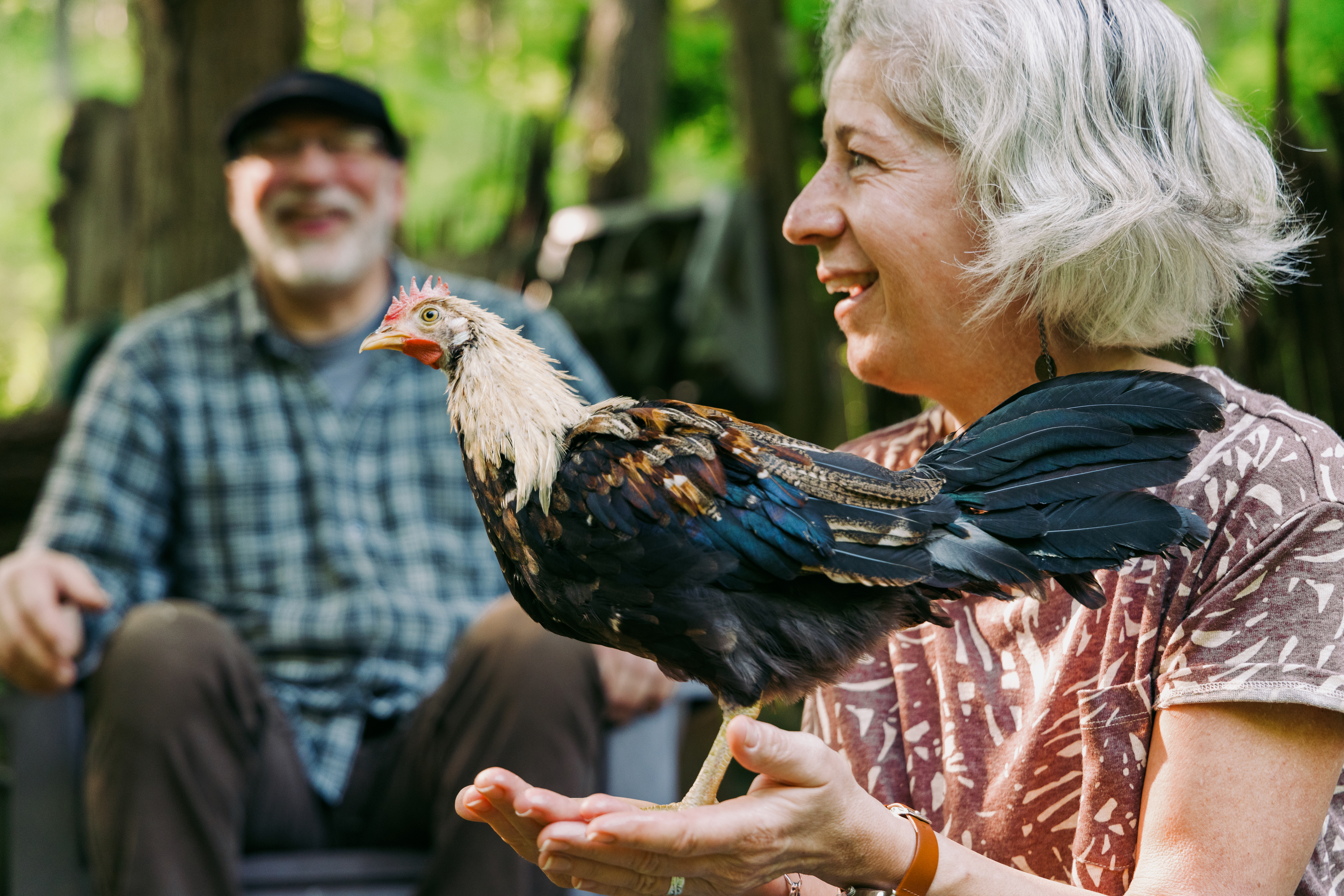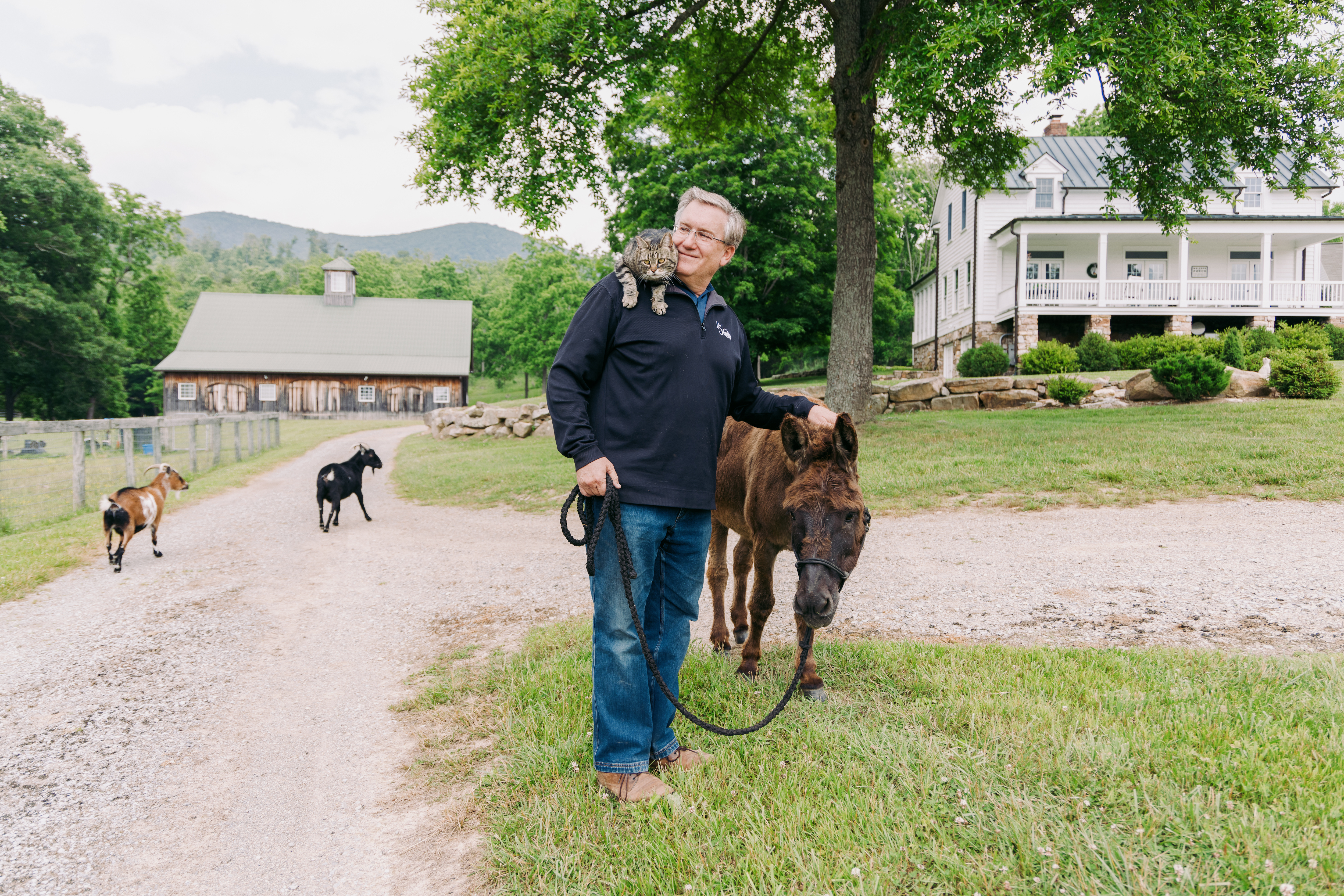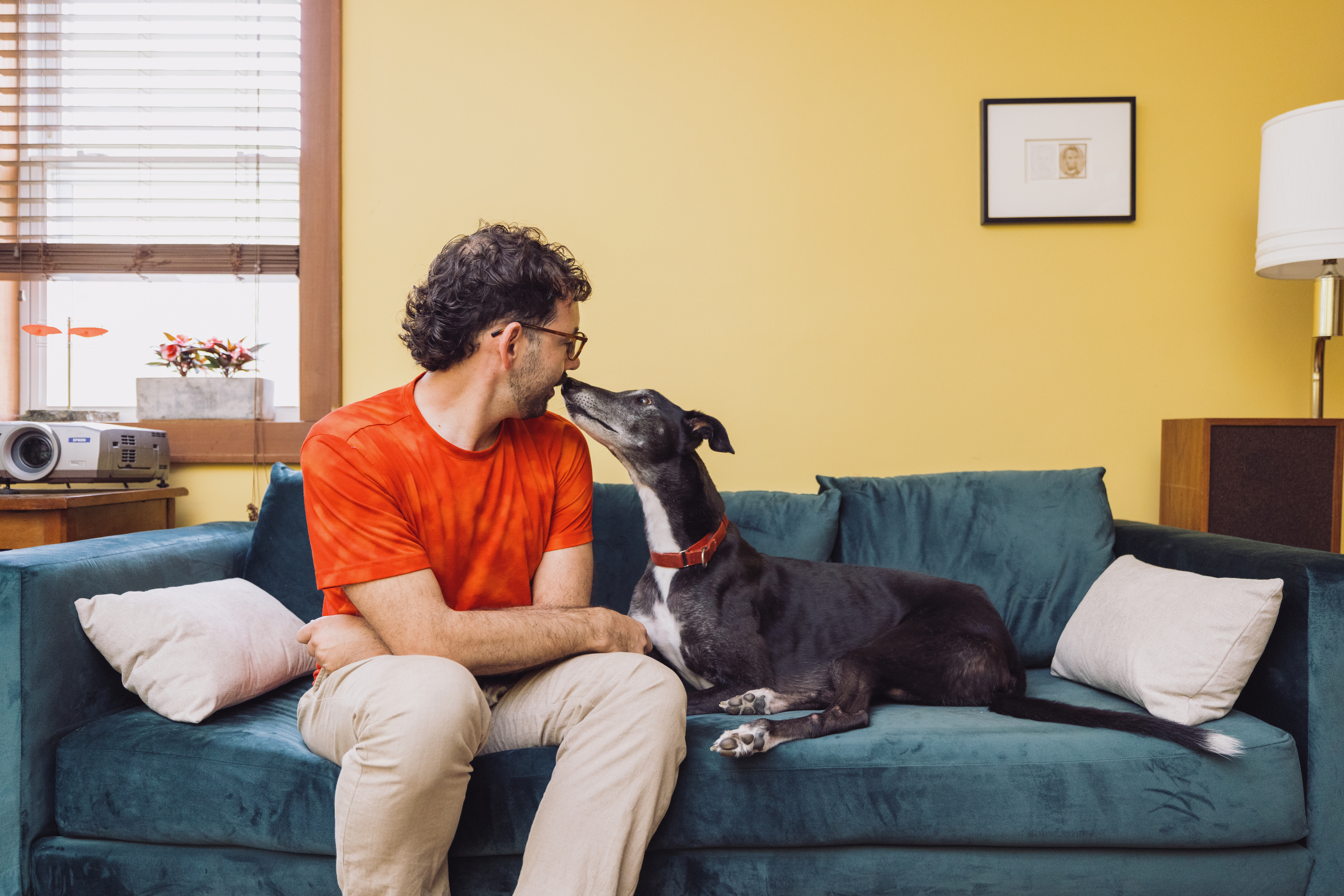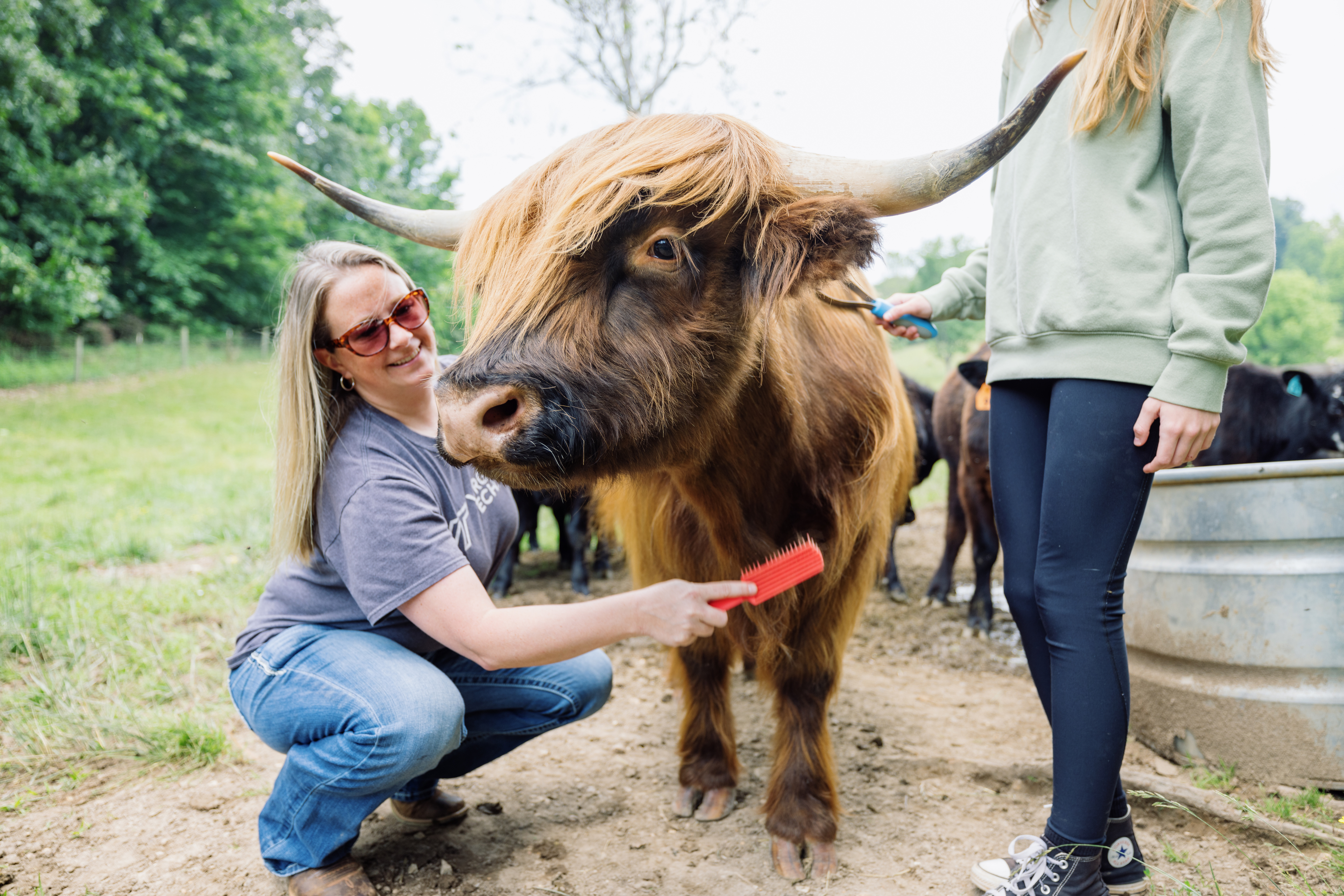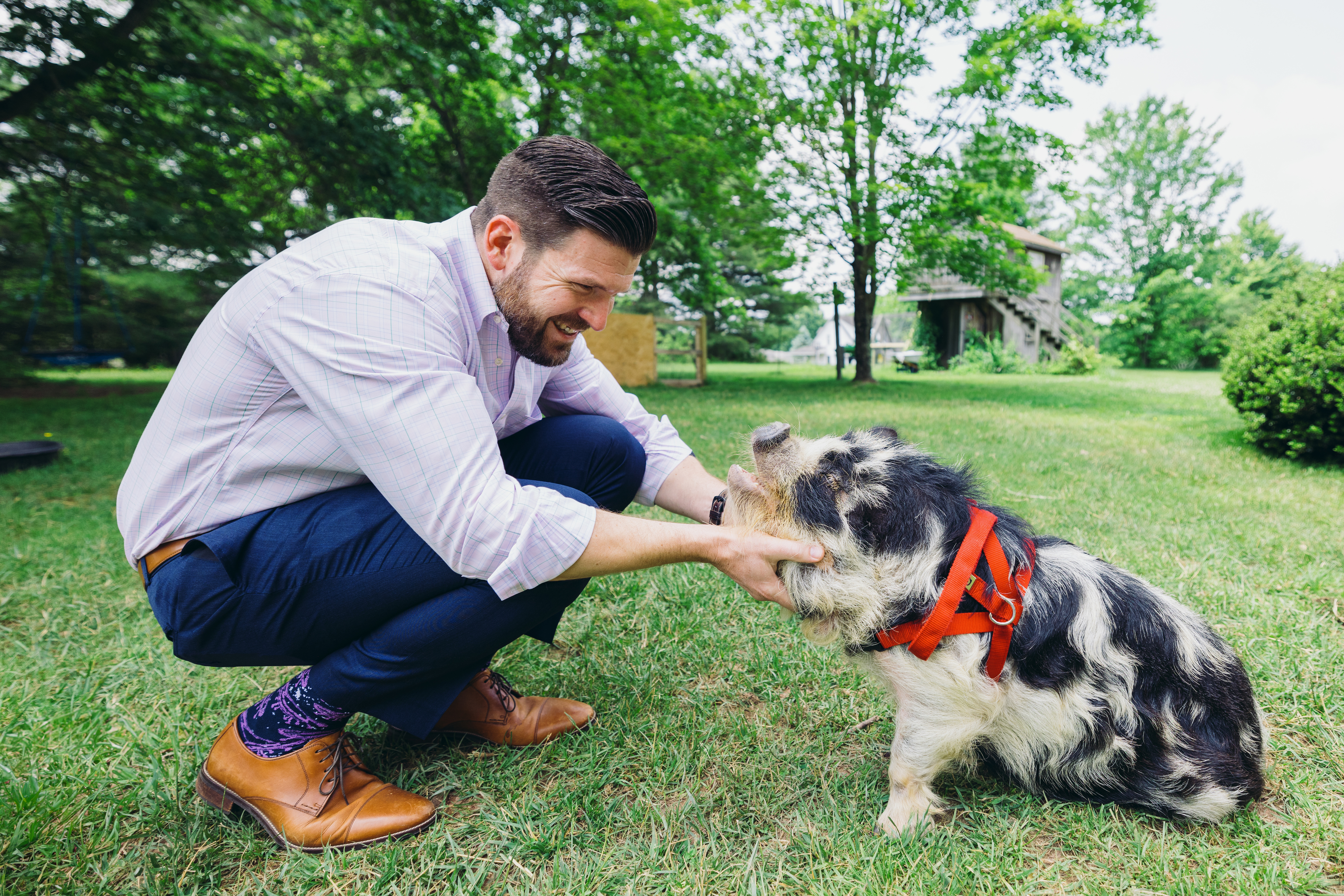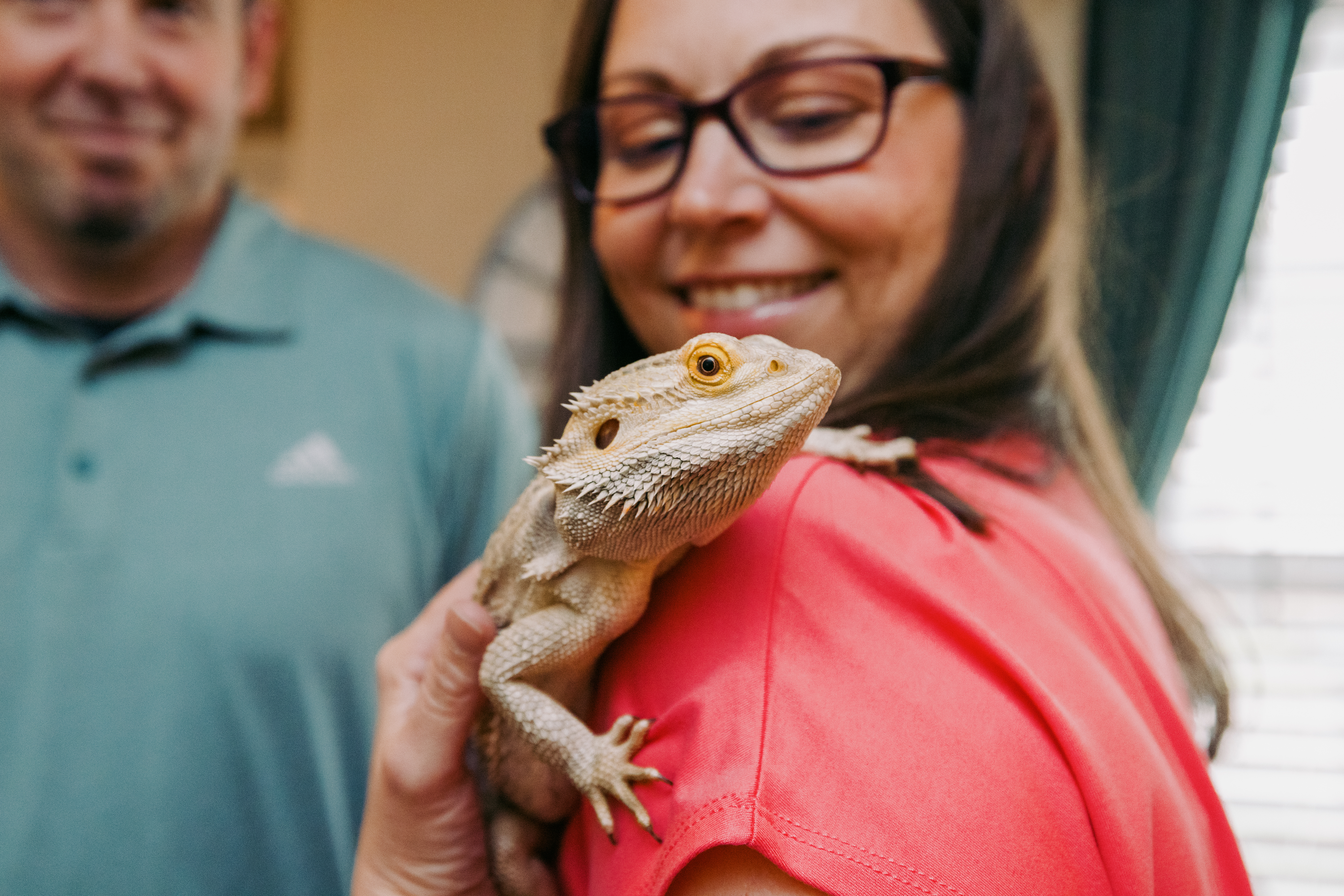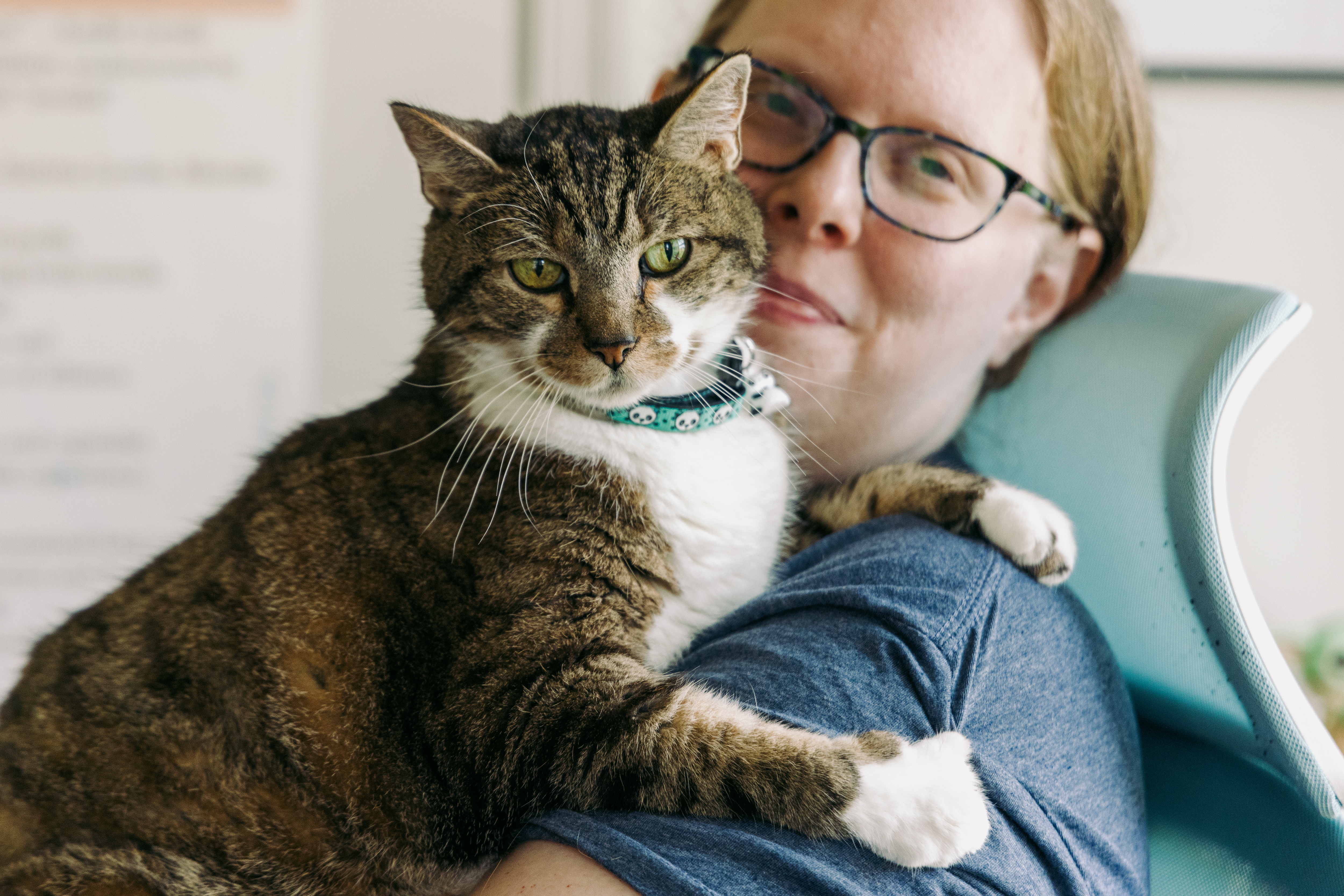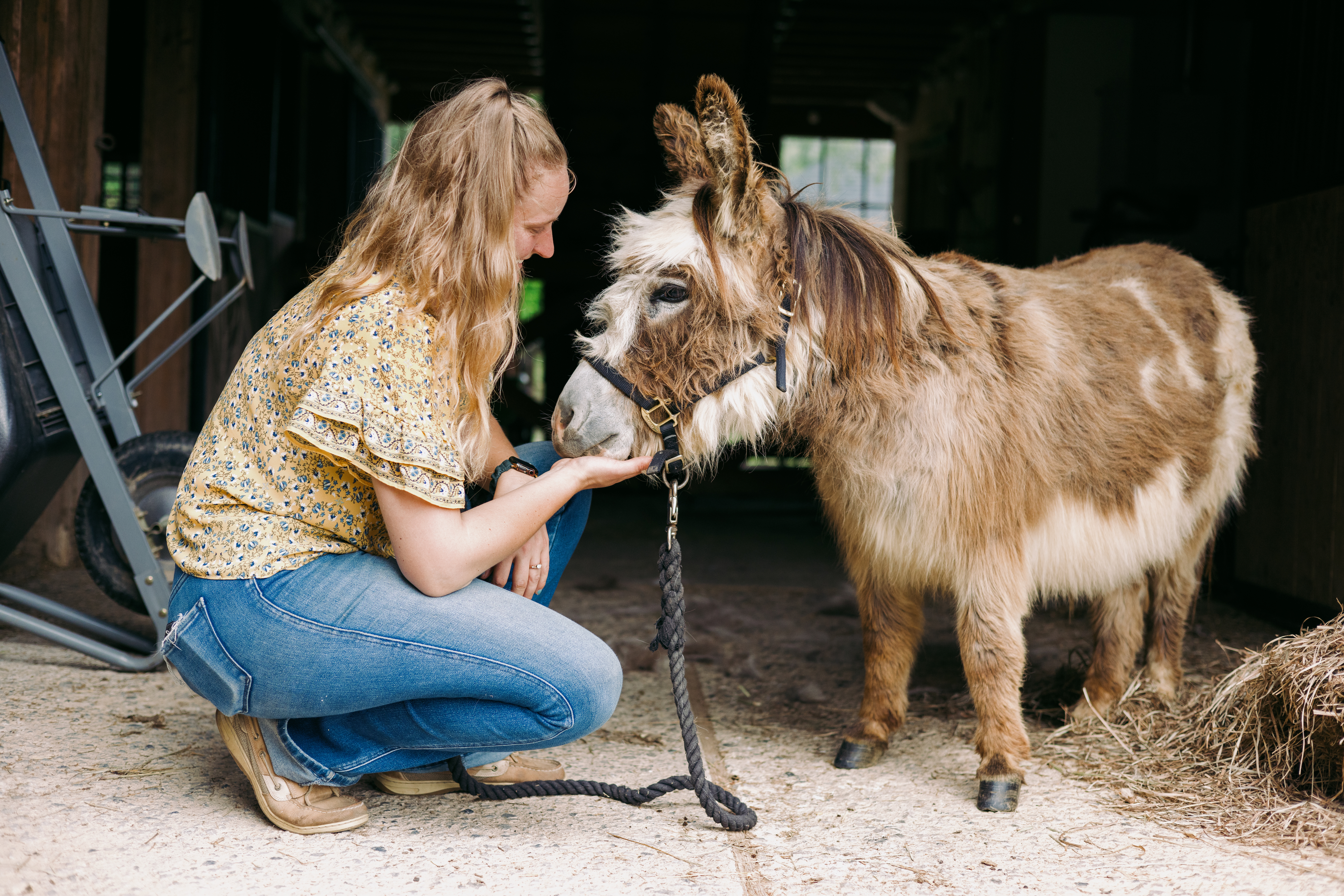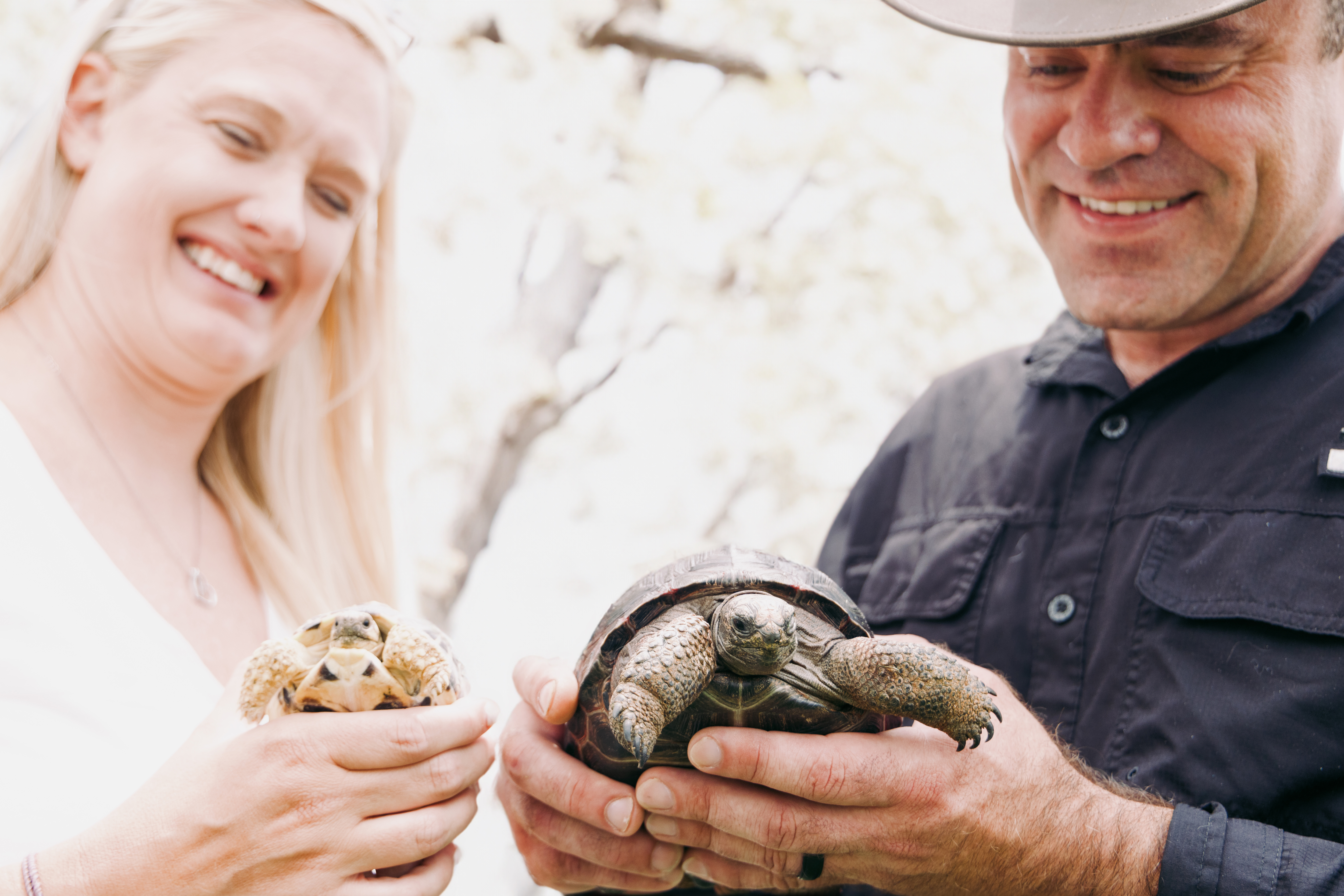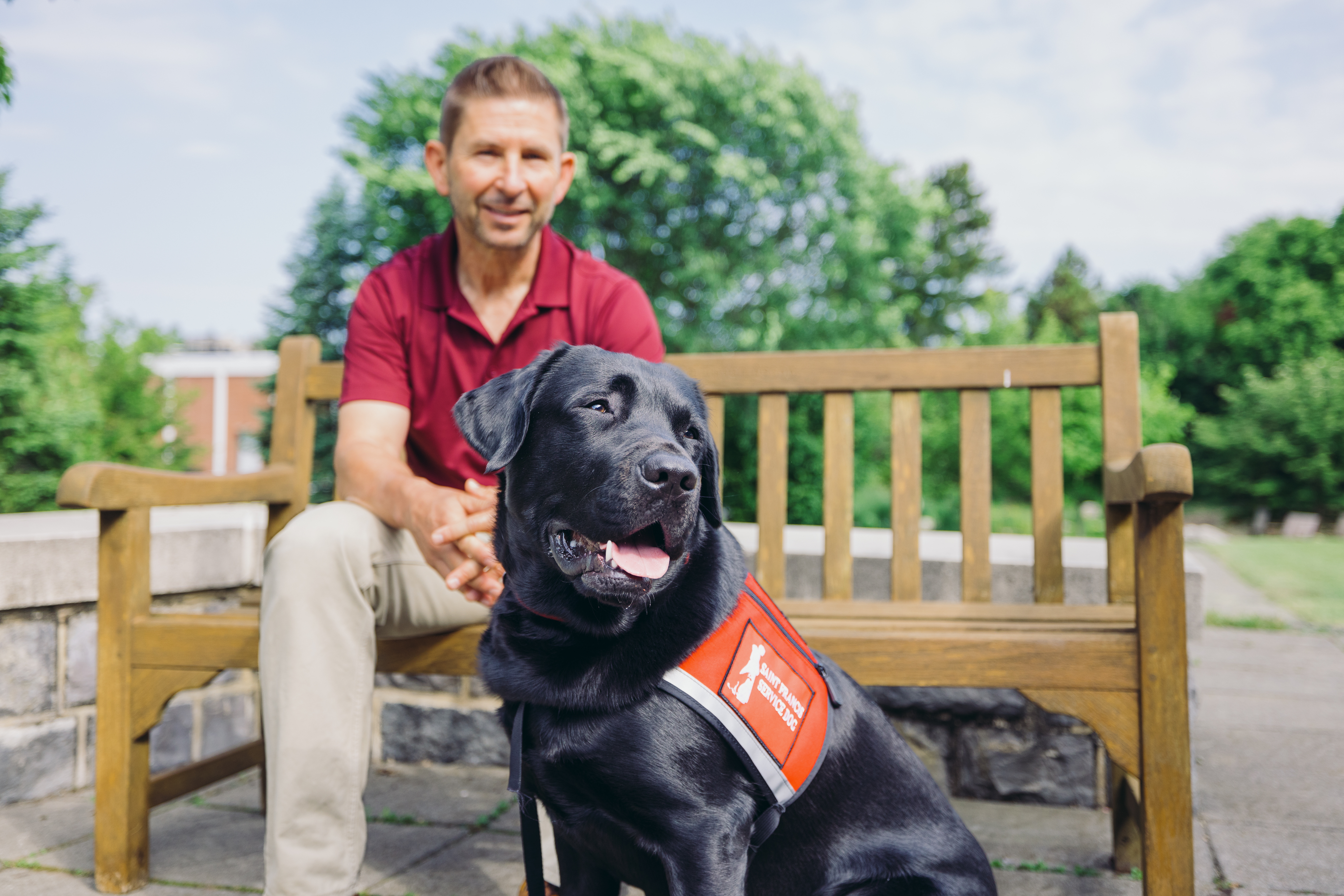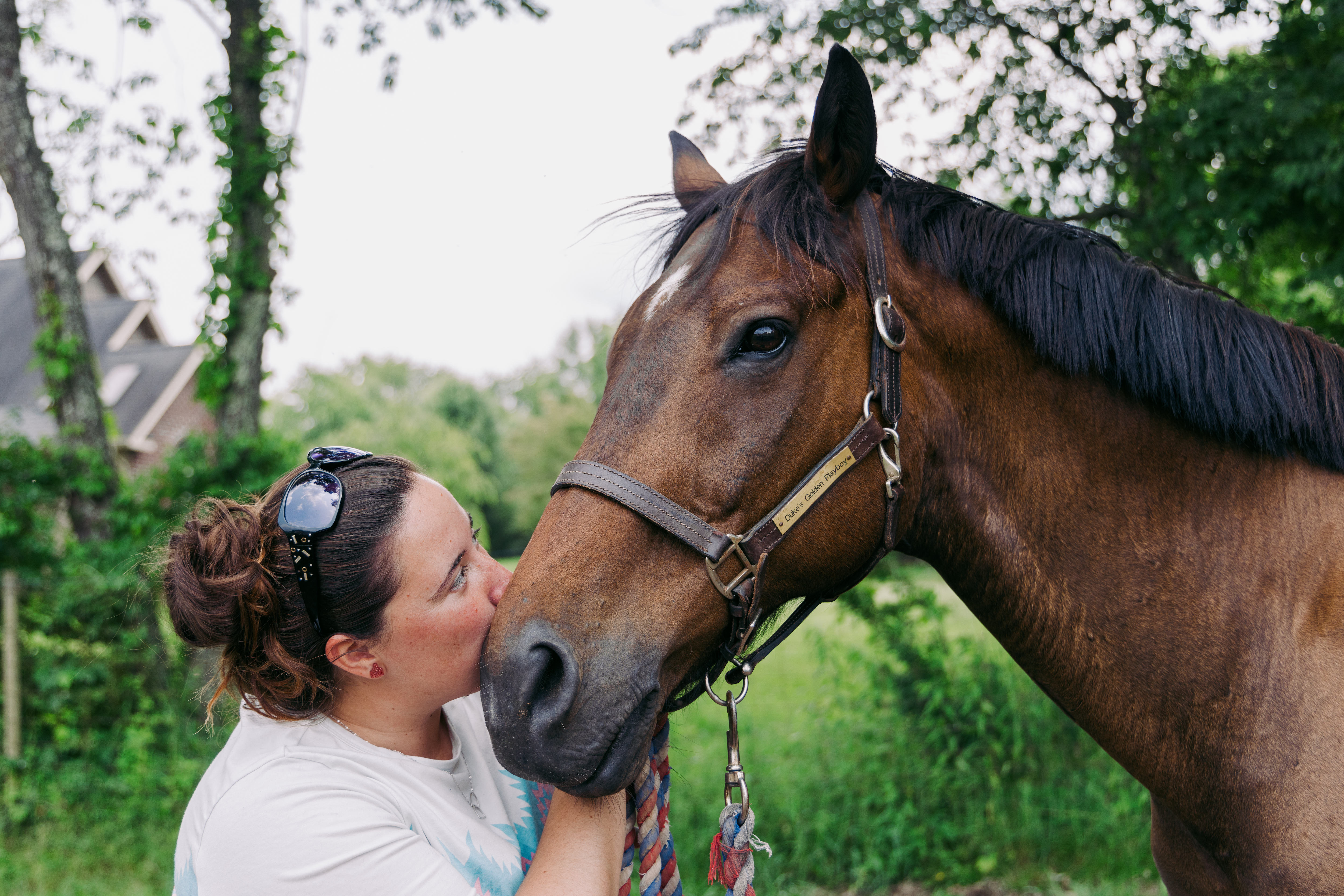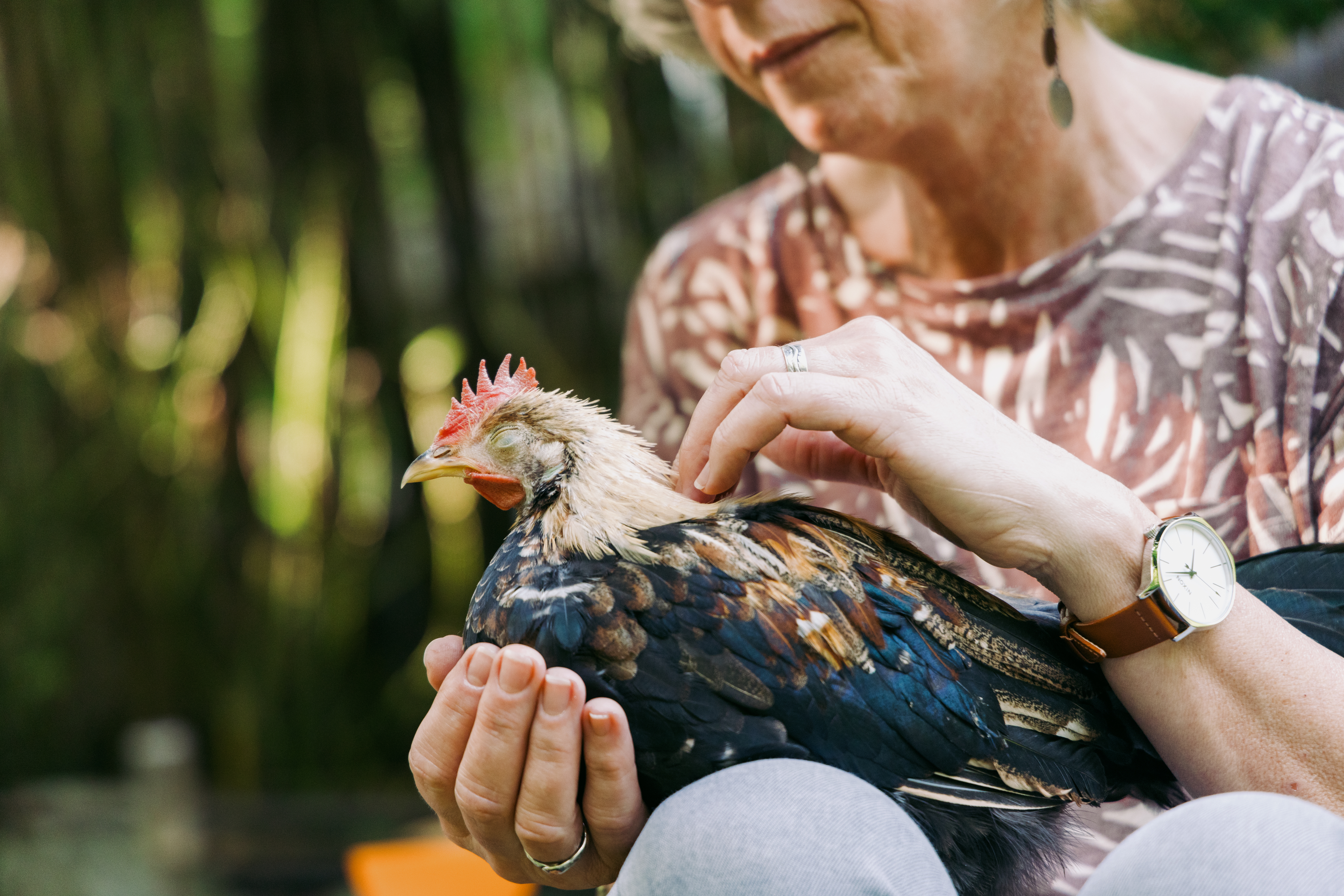The dog days of summer
Depending on whom you ask, “the dog days of summer” are either (a) the weeks from July 3 to Aug. 11, when Sirius, the brightest star in the “big dog” constellation Canis Major, rises alongside the sun; (b) a period of weather so miserably hot that even dogs go a little crazy; or (c) a reminder that, while it may be sweltering outside, it’s still a good time to hang out with your pets.
On a campus full of devoted pet parents, the right answer might be (c). “Animals can be a huge social bridge,” said Virginia Buechner-Maxwell, professor in the Virginia-Maryland College of Veterinary Medicine and director of the Center for Animal Human Relationships. “They can help knit us together, and they end up being great companions, filling in emotional space for individuals.” Caring about and for animals teaches us empathy and compassion, which in turn helps us to be kinder and more accepting toward each other, Buechner-Maxwell said. “Pets provide us an opportunity to become better people.”
Also, they’re pretty adorable. We asked 14 Hokies — a mix of faculty, staff, graduate students, and alumni — to show off their pets and explain, in their own words, why they matter so much.
Photos by Christina Franusich
Ron Fricker and Clyde, Magic, Tigger, and Taz
When we moved here, I liked to say that some days living on a 50-acre ranch felt like I was starring in my own personal version of the 1960s TV show "Green Acres." Imagine the opening with me as Eddie Albert bouncing by on my tractor! Seven years later, our ranch family has included donkeys, Nigerian dwarf and mini-LaMancha goats, a Shetland pony, a retired Virginia Tech thoroughbred, a mule, and cats. Soon we may be boarding a pot-bellied pig.
Many of our four-legged friends have had unfortunate pasts, and they may have health or behavior problems. That’s where my wife, Christine, comes in with a talent for understanding and caring for them. For instance, before one of the donkeys moved here, he was in a less-than-ideal situation without friends or shelter. So when he arrived and began enjoying daily care, individualized attention, and shade trees and grass pastures, he was in heaven.
As my wife says, “This is the animals’ forever home, and they’re going to get the best life possible for as long as possible.” I can’t imagine going back to a “normal” suburban life.
Michael Borowski and Cow
Greyhounds are known as the world’s fastest couch potatoes. Cow used to be an award-winning racer in West Virginia, where his unusual track name was “Slaytex Enercow.” Most greyhounds can run close to 45 mph. But since I adopted him from Star City Greyhounds in Roanoke, he prefers to sleep most of the time.
We go for two walks a day, so the kids waiting at the school bus stop all know him. He’s never met anybody he didn’t like. When we’re at home, he likes to stay as close to me as possible. Like, if I go and sit in the dining room, he’ll come lay on the ground next to me. He doesn't need me to do anything. He’s just like, “Where are we going?”
Amanda Atkins and Steve
My boyfriend calls me the cow whisperer. He didn’t want to get another dog, so instead we bought Steve, a Scottish highlander calf, off of Craigslist from a guy in Floyd. We do a cow-calf operation so he always has company, but Steve is definitely the alpha among the other calves. It’s Steve’s world, and everyone else just exists.
Highland cattle are a really interesting breed that’s so popular right now. Everybody wants a fluffy cow. He kind of looks like a troll doll, and we have used water to style his hair into a mohawk. At Easter, we put him in bunny ears, and at Christmas, we wrapped a garland around his horns. But when we tried to dress him up for Fourth of July he was like, “Nope.” He’ll let us brush him all day, though, and he likes when we scratch under his chin. He just puts his head down like, “Don’t stop.” He really is a part of the family.
Anthony Grafsky and Brutus
I met Brutus because of my job. He was maybe 6 months old and had been brought to the teaching hospital because he’d been attacked, probably by a dog. Over five weeks of treatment, he recovered, other than a missing ear. But unfortunately, his owners never came back for him. My wife had pot-bellied pigs before, and we made the decision to adopt him.
We take Brutus on walks down the street with our dogs. He’s kind of a neighborhood mascot. We built him a shelter in the yard made out of repurposed pallets and plywood — we call it Hogwarts. In the summer, we set up a kiddie pool where he can cool off. My favorite thing is when I come home in the afternoon and he’s laid out in the sun just living his best life. It reminds us to slow down, enjoy ourselves, and be happy.
Holly and Daron Williams and Drax
Daron: I’d wanted a bearded dragon for a long time, but Holly made the mistake of coming home and giving me implicit permission by buying a tank at the neighborhood yard sale for $25. That was enough to get started with a young bearded dragon from PetSmart. Of course, it only took three months max for Drax to outgrow that tank.
Holly: Drax is the pet I didn't know I would enjoy as much as I do. He's super chill and very social. When he wants to be with people, he claws at his tank, and if we don’t get him out quick enough, he’ll inflate part of his neck and it will turn dark gray or black. That’s how they got the name “bearded dragon.” In the evening, he likes to snuggle with Daron. Sometimes he’ll literally fall asleep. One night our son came barreling down the stairs, and I heard Daron go, “Shh, the baby’s sleeping!”
Elizabeth McLain and Misha
I considered myself a dog person until, as a Virginia Tech undergrad, I went to the Pulaski animal shelter with my roommate, and Misha jumped into my arms and started purring. The person working there was shocked. Misha was a 9-month-old feral cat they’d been handling with leather gloves because they didn’t think he could be tamed. But as soon as he was with me, he was instantly calm — and learned to calm me. I was struggling with PTSD and chronic health issues after the Virginia Tech shootings. I hadn’t slept through the night for years. But he would wake me up if I was having a nightmare, then snuggle up so I’d fall back asleep. All of a sudden, I could sleep better. It was life changing.
Later, he started alerting me to impending asthma attacks and would find my inhaler for me. Because of a few other conditions I have, he alerts me to get me to sit down when my heart rate shoots up. He basically trained himself to be an assistance animal, and I just paid enough attention to notice and reward his behaviors along the way. For those of us that are disabled, caring for a dog can be difficult, right? Cats can be more accessible, and I didn't realize that they can do all these things. Plus, Misha got uniformly fantastic teaching evaluations from my students during pandemic-era online classes.
Natalie Duncan and Fireball
That very first Christmas of COVID, when everybody was upset that there weren’t going to be Santa Claus photos, I painted a little nativity scene and started offering outdoor, socially distanced photos with Fireball the mini donkey in a Santa hat. By the end of the season, we’d raised over $2,000 for a local food bank, and Fireball was a Blacksburg celebrity. He’s received invitations for visits around Virginia Tech campus with units like CALS [the College of Agriculture and Life Sciences] and the Honors College and continued his fundraising efforts in the community.
The thing about Fireball is, I can't make him do anything. I can only suggest it. Sometimes he does it, sometimes he doesn't. But he loves people and loves taking selfies — he puts his nose right to the phone. I thought it was hilarious when we walked in the Christmas parade last year and a group of people outside a bar started chanting Fireball’s name. Then Ringo the police pony came along, and I think he ousted Fireball a little bit. I mean who wouldn’t love a pony wearing a uniform? Maybe Virginia Tech fire and rescue needs to adopt Fireball and design a uniform so we’ve got a police pony and a fire donkey.
Ashley and Brandon Crawford and Ross and Spartacus
Brandon: My grandpa had some land in Pulaski on Claytor Lake, and when I was 6 years old I would take the rowboat out and look for reptiles and amphibians. That turned into a passion for turtles and tortoises.
Ashley: Growing up, I always wanted a house full of animals. We can’t wait to have our own farm one day.
Brandon: Our tortoises actually have their own room upstairs. I put AstroTurf down and they have hides, places to soak, rocks set up with a heat lamp. People don’t always realize that these reptiles are going to live a long time, maybe up to 100 years. My Aldabra tortoise, Spartacus, will be 40 when I’m 80. They’re going to be with me for the rest of my life.
Klaus Moeltner and Alastair
My wife, Tiffany, is a field training manager for Saint Francis Service Dogs in Roanoke, and Alastair the black lab is “dog in training” number 14 for our family. At 15 months old, he’ll be with us for 8 to 10 more months as he masters over 60 commands and skills that he’ll need as a service dog partner to an adult or child with a disability.
Virginia Tech’s campus is a great learning environment for Alastair, because it offers all the sights, sounds, and diverse people of a full-fledged city, including buses to ride and door switches to press, as well as quiet pastures where he can be exposed to livestock. Everyone who sees him smiles. It’s a joy to be part of the process of training him — even if at home he’s still a slipper thief.
To learn more about job or volunteer opportunities, or to apply for a dog, visit SaintFrancisDogs.org.
Morgan Sowers and Duke
I teach horseback riding lessons to kids and college students, so I acquired three horses to make sure everyone had plenty of riding time. I've had a lot of students say, “I had a really crappy day in class, can I just come ride?” I think people use it as an outlet and enjoy having a bond with something else that's living. Personally, I always feel better after I ride.
Duke is a former racehorse, so he’s a little more excitable. Lonesome is so chill, anybody can ride him. Then Wyatt I got because he had an accident as a foal and lost an eye, and nobody else wanted to buy a one-eyed horse. A lot of the animals at my place are ones no one wanted. It’s like a little island of misfit toys. They all have a story.
Monika and Mark Gibson and Peep
Monika: As a very young chicken, Peep was attacked in the coop by another rooster in the flock. We weren’t sure he’d survive. When we isolated him, we were just thinking we’d give him a comfortable last few hours.
Mark: We kept Peep inside, held him, fed him. And he lived. He started sitting with us — although by now he’s very much in his adolescent stage, so he doesn’t sit with me as much anymore.
Monika: Peep is very goofy, but he’s sweet. I think he will always be more comfortable being held than the other chickens. I had a scare yesterday when he disappeared from sight, but he’s just getting big and exploring more. We live out at the end of a dirt road, next to acres of forest, so we’ve had cats, dogs, goats, rabbits, possums, and more, always giving a home to the rejected or orphaned. You have so much love to give the world, right? You give it to people, and then you give it to other living creatures.





